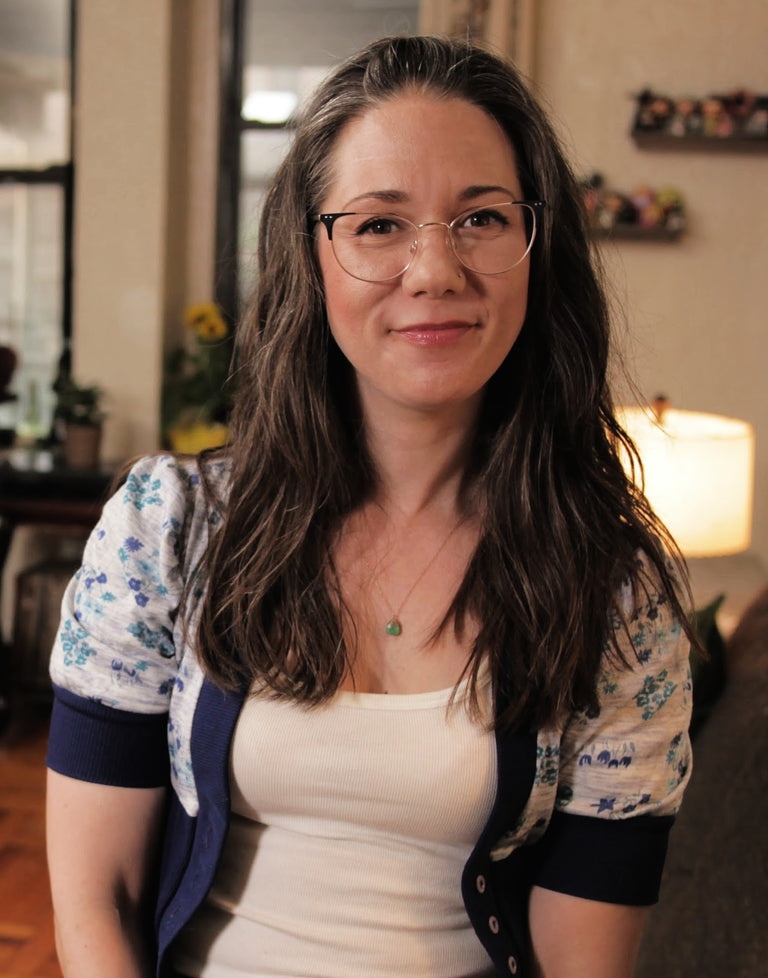Many people aren't aware that, for best results, they should base their hair care and styling routines on the type and texture of their hair.Do you know what type of hair you have? What about your hair texture? Why does it even matter?
Together, hair texture and hair type form each person's unique head of hair. And each head of hair requires a specific care and styling routine to help it look its best. Here's what makes hair texture and type different, how to care for your hair's specific needs, plus learn more about the best products to provide multi-benefit customized care for your hair type and texture.
#include-related-slider#
Hair Texture and Type Are Two Different Things
Though the two terms "type" and "texture" are often used interchangeably, according to the pros, hair texture and hair type are two totally different things.
“To put it into simple terms, the difference between hair texture and hair type is this: Hair texture specifically refers to individual hair strands, whereas hair type generally refers to the head of hair as a whole,” said Jeremy Pugh of Jair Does Hair, a stylist based out of Denver, Colorado.
These two little pieces of information about your hair’s general make up can be crucial to an effective hair care routine. “Knowing your hair type and texture allows you to understand your hair's character, the products to use to help maintain it as well as how best to style it. It also provides clarity on how to best treat your hair to keep it healthy,” added Dr. Alain Michon of the Ottawa Skin Clinic in Canada.
Shop: GRO Balance & Boost Kit for All Hair Types
What Is Hair Texture?
When we talk about texture, we’re talking about individual strands (or “shafts” if we’re using the lingo of hair anatomy) and their makeup, which is why you might also see “texture” referred to as “structure.”
Hair can be either fine, medium or thick, and since these differences are based on hair shaft structure, they can have a real impact on how our hair responds to various styling products, methods and treatments. Here's how fine, medium and coarse hair differ.
Shop: Shea Whitney's VEGAMOUR Picks
Fine Hair
Fine hair is typically very soft and delicate. Made up of only two hair layers (the cortex and the cuticle), these hairs can be silky smooth and sleek, but they're also the most prone to breakage. If your hair doesn’t hold heat styling all that well or is often weighed down by product, you probably have fine hair. You might consider products formulated to encourage thicker, fuller looking hair like VEGAMOUR's GRO line of hair products.
Medium Hair
Medium hair shafts are perhaps the most common, and they are thicker than fine strands. Medium hair will have a cortex and cuticle, like fine hair, but might also have a third layer called a medulla. Having a medulla tends to make medium hair more tolerant to higher-stress styling or coloring and less prone to breakage, but more prone to dryness.
Thick (Coarse) Hair
People with a thick (also called coarse) head of hair have lots of strands that contain a medulla. A person with a thick hair texture will appear to have a fuller head of hair, even when compared to someone with the exact same number of hair follicles but a fine hair texture. Thick hair is the most resilient when it comes to styling, chemical treatments and general breakage. However, thick hair takes considerably longer to dry and can be prone to frizziness.
Thick hair also tends to be the driest of the hair textures, which is why you should look for a hydrating formula.
To sum it up: “Fine hair tends to break easily, it’s hard to style and gets oily pretty quick. Medium hair covers the scalp well and is easy to style. Coarse hair has three layers and is the most resistant to damage,” said Nikki Goddard, certified cosmetologist and editor of The Right Hairstyles Magazine.
See: These 6 Situations May Mean You Should See a Trichologist
What Is Hair Type?
Dial back out from individual-strand makeup and think about your head of hair as a whole. “When we're thinking about hair type, there are four general categories, which include straight, wavy, curly and coily (or kinky),” said Pugh. Hair type is a spectrum based on how straight or curly your hair is.
You probably know what kind of hair you have already, but an easy way to find out is to simply let your hair air-dry — sans a single ounce of product — to see what your natural hair looks like. If it dries completely straight, you have Type 1 or straight hair. If it takes on any form of an s-style wave, you have Type 2 or wavy hair. Bouncy curls indicate Type 3 or curly hair, while super tight, kinky or zigzag patterned curls are considered Type 4 or kinky hair.
From here, each of these four types can be broken down into one of three additional categories — A, B, or C — based on texture.
Try It Yourself: Vegan Keratin Shampoo & Conditioner for Every Hair Type
Straight Hair (Type 1)
Naturally straight hair tends to catch the eye because of its ability to bounce light off its sleek surfaces. Depending on the texture, straight hair can vary in strength and styleability. Fine, straight hair can be quite delicate and hard to style. Medium and thick straight hair is more resilient, but also more prone to frizz. Coarse, straight hair can be hard to style.
Wavy Hair (Type 2)
Wavy hair also has its own spectrum, but unlike curly hair, the wave doesn’t travel the entire length of the shaft. Instead, it’s usually concentrated in the bottom half. To look its best, wavy hair typically needs attention in the form of product and styling.
Shop: Wavy Hair Products
Curly Hair (Type 3)
Hair with distinctive bouncy curls is the next stop on the hair-type spectrum. While this type of hair may straighten out when wet, it won't stay that way. Curl will be present from the top to bottom of the strand, and while strands can vary in texture from fine to coarse, curly hair is often fine. This hair type definitely needs a little extra love and care to keep curls looking well-defined and healthy.
Related: How to Sleep With Curly Hair
Coily/Kinky Hair (Type 4)
This hair type is defined by very tight curls, coils or kinks that can boast everything from s-shaped to z-shaped growth patterns (or a combination of both). People with coily and kinky hair must also deal with all of the challenges posed by curly hair in general: frizz, shrinkage, curl definition, and dryness. This hair type also tends to be the most fragile and prone to breakage.
Related: How to Determine Your Hair Porosity — And Why It Matters
Hair Care Based On Type and Texture
Now that you know more about your hair type and texture. What’s next?
“The importance of knowing your hair texture versus hair type establishes the platform upon which your hair care regimen should be built,” explained Blake Vicari, a color specialist at Salon SCK in New York.
But shopping for hair products can cause overwhelm due to the sheer volume of available products that promise everything from shine to curl definition and frizz-control to mega volume. To help, here are a few tips from professional stylists.
Hair Care Based On Type
Straight hair tends to become weighed down by too much product, and since oil travels right down a strand of straight hair, this hair type also tends to become oily the fastest. Frequent washing with gentle cleaners might be needed. Goddard also recommends avoiding butter, serums or any product that contains oil.
Regarding wavy hair: “Dry shampoos and texture sprays are the best solutions. Wavy hair should also be cared for and styled without oil-based and creamy products. Instead, try a water-based gel or mousse to boost volume and don’t forget to use a diffuser - it will reduce frizz,” said Goddard.
“Curly and coily hair are more susceptible to breakage, and they need more moisture, both to control frizz and protect from breakage. Curly- and coily-haired individuals will want to avoid shampoos with heavy sulfates as these will strip their hair of the natural oils their scalps produce, which, in turn, leads to breakage as well,” said Pugh.
For those with oily scalps or flakes, consider a weekly scalp detoxifier like GRO Scalp Detoxifying Serum to cleanse and clarify the scalp.
Additionally, Goddard advised that kinky/curly hair shouldn't be combed or brushed regularly.
#include-related-slider#
Hair Care Based on Texture
Fine hair will benefit from being cared for with a soft touch because it is both delicate in structure and prone to becoming limp if weighed down with too much product.
“Individuals with fine hair will want to avoid products with heavy moisturizers as this tends to weigh hair down and flatten it. And since fine hair already is a challenge to curl, it’s best not to introduce any additional styling whenever possible,” said Pugh.
Medium and coarse hair will most often benefit from products to control frizz. Plus, being less prone to breakage or being weighed down by product means these hair textures can be styled more often.
Regardless of hair type or texture, always protect your hair when styling with a heat protectant spray like VEGAMOUR's HYDR-8 Leave-In Conditioner.
“People should make sure that they are always using a heat protectant with any sort of thermal stylings tool whether it be a blow dryer, curling iron or flat iron. For people with color-treated hair, thermal protectants prevent fading as well," added Pugh.
All hair types can also benefit from sleeping on a pillowcase designed to decrease friction throughout the night. "People with curly and coily hair will especially benefit from sleeping [on] such a pillowcase as their hair will be less frizzy in the morning,” said Pugh.
And finally, consider adding a little weekly TLC to your hair care routine with the hydrating hair mask. A replenishing and nourishing treatment for all hair types and textures, this aromatherapeutic mask is like beauty rest for your locks.
The Takeaway
Next time you’re shopping for hair care products, consider taking a more holistic approach that addresses both your hair's type and texture, instead of just one or the other. Experiment to come up with the best solution for your hair’s own unique needs.
More From VEGAMOUR
- Shampoo or Conditioner First? Hairstylists Explain
- A Nutritionist's 5 Must-Have Pantry Items for Healthy Hair
- Here's What Real VEGAMOUR Customers Have to Say
Photo credit: Ron Lach/Pexels
Back


















